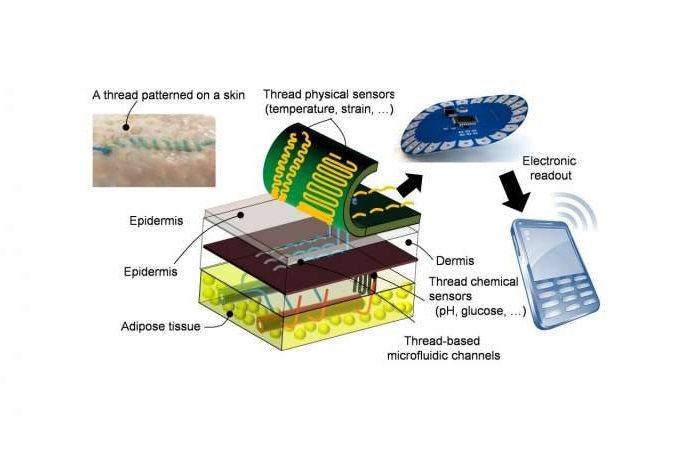Until now, two-dimensional stitching structure is used for implantable devices. But these materials are too expensive and require specialized processing. Scientists from Tufts University have invented a new smart thread. This novel thread can collect data on tissue health, pH, and glucose levels. It is used to discover wound is healing or not. It also checks whether the infection is emerging, or whether the body’s chemistry is out of balance.
Scientists have combined small-scale sensors, electric gadget, and microfluidics into threads. Both factors vary from simple cotton to complex fabric that stitches multiple layers of tissue. Through this, diagnostic data comes out wirelessly in real time.
Researchers have used different conductive threats and connect them to the wireless electronic circuit. This allows them to create a flexible scaffold that they stitched into tissue in rats as well as in vitro. Then, threats detect body’s chemistry by collecting data on tissue health. The results are then sent wirelessly to mobile or computer.
According to scientists, “There is still more study needed in various areas, including long-term biocompatibility. The results may increase optimizing patient-specific treatment’s possibilities.”
Sameer Sonkusale, Ph.D., director of the interdisciplinary Nano Lab in the Department of Electrical and Computer Engineering at Tufts University’s School of Engineering, said, ” The stitching ability of thread-based diagnostic device in a tissue or organ environment in three dimensions adds a unique feature that is not available with other flexible diagnostic platforms.” We think thread-based devices could potentially be used as smart sutures for surgical implants, smart bandages to monitor wound healing, or integrated with textile or fabric as personalized health monitors and point-of-care diagnostics.”
In conclusion, this 3D thread based diagnostic platform can become as efficient stitching for latest injectable diagnostic devices and smart wearable systems. This new smart thread can also adjust organs, wounds or an orthopedic implant.
The Key Features of This Smart Thread:
- It is plentiful, thin, flexible and available at low cost.
- Can be easily manipulated into any shapes.
- Analytes can be delivered directly to tissue by using thread’s natural properties.
